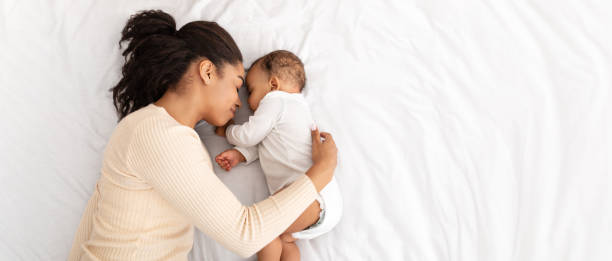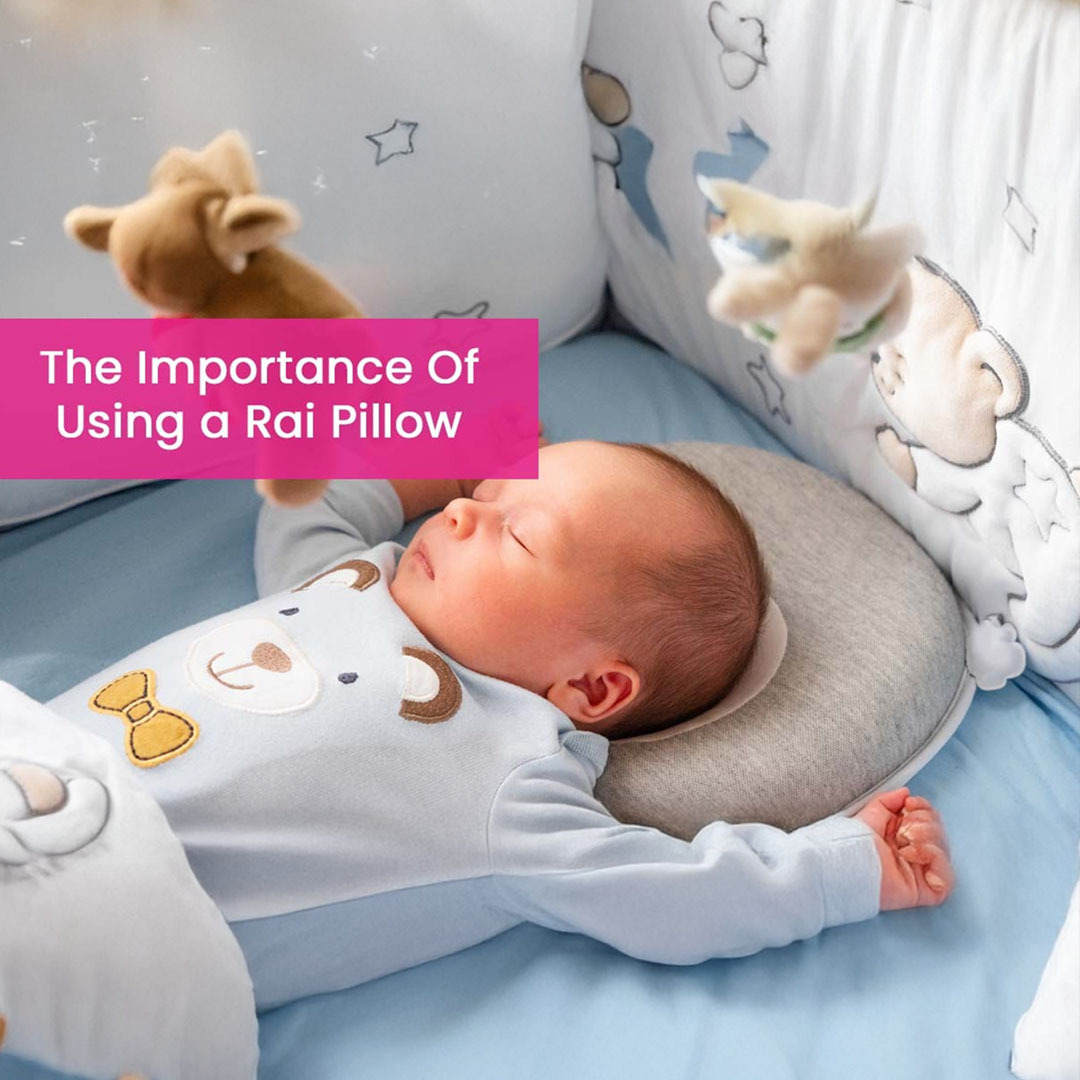
Blog
The Secret 5 S Techniques to Set Your Babies Day- Night Sleep Schedules. (Plus extra bonus hacks)


Is your baby 0-3 months old?
Does their sleep schedule confuse you?
Then this blog is just for you…
Today in this blog we’ll be covering everything related to sleep for your 0-3 month old baby. Some simple observations can be, baby sleeping longer than usual, baby sleeping as little as half an hour sometimes. Some babies are crankier while others are playful & peaceful, some babies prefer sleeping through the day & some prefer night. You’re not the only ones facing this, this is a very common trouble faced by most new parents and here we are helping you unravel some of these mysteries.
Setting our babies day & night schedule, thus ensuring peace for ourselves & our babies.

Some basics to start with, there is night, and then there’s day. Most important thing to take a note of is the duration of baby’s sleep is less important as compared to the frequency of times the baby sleeps. Frequency is more important than duration. Total duration of hours the baby will be asleep, day & night combined should be around 15-17 hours.
A lot of parents are confused about the foetus’s sleep cycles & durations, thus assuming them to be asleep 20-22 hours inside the womb & once out expect the same. Culturally, ghutti, jaiphal are administered to the baby for putting them to sleep. Prolonged sleep ensures healthy baby is a myth & misconception.
If the baby sleeps longer during daytime, they’ll sleep less at night. And if they sleep longer at nights, they’ll sleep lesser through the day. Overall the baby is only going to sleep 15-17 hours, day & night combined. From that 10-12 hours is night’s sleep and remaining daytime sleep is about 5-7 hours. But maybe your child does not sleep this much few babies sleep 4 hours post bath, but your baby might wakeup between 40 minutes to an hour. Few babies might sleep as less as only 30 minutes.
Post 3rd trimester, Initial 3 months post birth, especially 0-3 months phase is called 4th trimester of baby’s life & this 4th trimester is very important for the baby as it’s the settling phase for the baby in this world.
So when will the baby be aware of day & night? 2 weeks post birth
First 2 weeks baby takes to understand the outside world. The first 2 weeks is also a settling phase for the new mom. Usually we notice baby’s weight loss in initial 8 days and then it gradually increases in next 8 days. So approximately post 2 weeks the baby is back to birth weight. That is also when breastfeeding sets. Those parents giving breastfeeding and formula in combination, their routine also settles around this duration. A mother understands her baby’s hunger cues, feeding cues in the first couple of weeks. Post this we slowly establish day & night awareness to our baby.
Establishing difference in day & night sleep.
To simply put, just like in adults afternoon naps are more gentle & carefree lying down on bed, sofa or recliners just to catch a quick nap, some of us even do it while sitting on a desk at work. So this is very important, days sleep is naptime and should be shorter and gentler.
Daytime Nap Schedule:-
Whereas night time is sleep time there is difference in these two, as we discussed earlier, the duration of daytime sleep is less relevant as opposed by the frequency of naps through the day. So ideally a 0-3 month’s baby should nap every 2 hourly, whether the nap is of 30 minutes or a couple of hours that depends on your baby but every 1 & half to 2 hours a nap is must.
But your baby doesn’t sleep this frequently instead this is when they demand a feed? Then try putting the baby to sleep as you feed them. Remember, every two hours the baby gets tired, they might not get cranky necessarily. May not shout or cry for attention but if you put your baby to rest even if just for 30 minutes, then the baby remains much fresher throughout the day.
Points to Remember:-
- Every 2 hourly a 30-60 minutes nap is very crucial.
- Don’t make the nap environment too cosy, don’t dim lights or shut the windows.
- Don’t create a noise proof environment as night time. It’ll end up confusing the baby about day & night. Generally most parents would agree, if a new-born wants to sleep he’ll sleep irrespective of the environment. That’s their capacity to sleep. That’s why refrain from creating extremely cosy & extremely dark environment during the day.
- There should be a difference between daytime & night time sleep.
- One thing to be cautious about daytime naps is while putting your baby down for a nap don’t overstimulate & keep the baby awake.
All of you remember the signals a baby gives when sleepy, like yawning, rubbing eyes, drowsiness. These are cues of your baby telling you they are tired & need a break. This body language should suggest you to put your baby for a nap.
Putting the baby to sleep:- The Magical 5 S techniques.

Swaddling is a baby specific trait & differs from baby to baby. Few babies enjoy being swaddled for the initial few months & sleep better. Swaddle up the baby, then breastfeed him & then you have to follow the 5 S rules mentioned below.
1. Swaddle
If your baby sleeps off while feeding but as soon as you put him down they wake up, then this suggests baby getting habitual to sleeping on the breast. Usually we reverse it, daytime naps should go as keeping the baby up while feeding by tickling or mildly engaging baby. Once the baby is alert, hold them closer if your baby likes swaddling, then make sure your baby is swaddled up usually 0-3 month’s baby like being wrapped. Swaddling means being wrapped tightly.
2. Side lying positioning
When the baby was in our womb the baby usually slept on one side. The baby still likes sleeping on one side and it’s found out to be more effective while putting the baby down to sleep.
3. Make a sound
This sound should help the baby to fall asleep. It can be a simple sssssssshhhhhhh sound or any calming noise in low notes to put the baby to sleep. The more often you make this while putting the baby to sleep the better effects it’ll have on initiating sleep signals in the baby’s brain.
Is holding baby in hand compulsory?
Not at all you may lay the baby down and follow these. Make sure the baby mattress is not extremely soft. The baby should not submerge in the mattress when placed on it. Baby’s mattress should be made of firm cotton preferably. Don’t use pillow for baby, unless if baby has severe vomiting issue only then a pillow can be used. Otherwise, you can go for rai pillow or u shaped pillow which has a flap canter & support around it for the head. You can lay the baby on the mattress and make the ssssshhhhhhhh sound.
4. Swaying
So swaying either front & back or sideways, whichever you prefer. If you’ve laid your baby on the mattress then you can sway the baby from front to side. Or gently pat the baby’s bum
5. Singing
You don’t have to be as good as Lata Mangeshar, irrespective of how you sound, every baby likes their parent’s voice, if you know of any gentle lullaby or song then hum that gently. That’ll soon become a routine for putting baby to sleep.
6. Sucking (Bonus point)
If the baby has still not slept after all of this then try sucking. Give their pinkie finger, slightly in their mouth & the baby will start sucking on it. As soon as the baby sleeps remove the finger. To prevent from this becoming a habit don’t keep it in for too long it’s just for the sucking reflex. It makes baby feel good & puts them to sleep sooner. Usually we don’t want the habit of baby sleeping on the breast only.
Put the baby to sleep & that’s it. So 30 minutes to 1 hour the baby will nap might exceed this sometimes as it’s proportional to how tired the baby is & every 2 hourly you have to follow this same routine.
Now moving on to night’s sleep
Night time sleep is slightly longer let’s say their total sleep time is 8 hours it’s not at a stretch, the baby wakes up about 2-4 times for a feed during the night So baby wakes up at approximately every 2 hours or 2 and a half hour intervals for feed.
Is it okay if your baby sleeps longer than 2 hours at a stretch?
The initial 1-2 weeks, feed hasn’t settled yet. Post 15 days the Dr. informs you whether the baby has regained their birth weight, your feed is set, you are confident now. Once this is set in the first 2 weeks then twice every 24 hours 3-4 hour stretch of sleep can be achieved without feed .But not more than twice, more than twice you’ll have to wake the baby up for feed but twice is okay. Once the baby is more than a month old, weight gain is completely normal & everything else is okay then these durations can go up to 4-5 hours also. That is baby can sleep 4-5 hours at a stretch twice a day. If it’s more than twice then you have to wake the baby up for feed.
Night time Sleep schedule:-

Last evening nap should be 1 & half or 2 hours before baby’s bedtime. Ideal bedtime for this age group is from 8-10pm. It shouldn’t vary much daily, keep it set. Slight half an hour here & there is okay but not more. If you want your baby to sleep well through the night there has to be a fixed bedtime schedule.
Bedtime routine will include bedtime massage, bedtime sponging – we’ve made a video on this please make sure to watch it https://www.youtube.com/watch?v=KWvbI-hMeHY All massage techniques showed in that video ensure the baby is not stimulated. Remember, playing with the baby, pulling their cheeks, loudly singing to them, all of this is very stimulating & should be avoided before putting the baby to sleep.
Around night time, darken the environment, make the surrounding cosy, gentle music, swaddling, swaying, gentle singing, rocking the baby in a cradle all these cosy elements are for night time sleep. This will help baby distinguish longer sleep & shorter sleep. When baby wakes up at night, don’t turn on the lights to check if the baby has pooped or peed or whether the baby needs a diaper change. Preferably use dim lights only, if you have to change their diaper then open the swaddle check. Change their diaper if needed wrap the swaddle again, feed the baby and follow all the S again.
If you have just fed the baby and the baby cries within half an hour or so & you are aware the baby isn’t hungry, don’t take them for feed. Try to use the S techniques, you’ll so know what works best for your baby. Obviously when it’s time for feed, it’s important for you to feed. Usually when you put your baby to sleep around 8-10 pm, 2-4 am will be the baby’s feeds and around 6-8 am will be the baby’s wake up time & from there continue with your day nap schedule.
If your baby is on powder milk or bottle feed then keep in mind to not over feed your baby during daytime such that they sleep over 3-4 hours. Reduce the quantity, you can increase the frequency if required. Even at night, your bottles should be ready so you can feed. Like we mentioned first diaper change then swaddle followed by bottle feed or however you administer milk and then put the baby to sleep using the S schedule we discussed.
Powder fed babies tend to sleep longer, for a very simple reason. Powder milk takes longer to digest & keeps the baby full for longer. Whereas in breast milk feeding the baby gets slightly tired in sucking as compared to bottle feeding. So bottle fed babies might sleep more as they feed more. That’s absolutely normal you can set your schedule accordingly.
Summary:-
These were a few basics related to 0-3 month’s babies. Remember, this is babies 4th trimester & we have to help the baby establish day & night, to differentiate between day & night.
Can you lie & feed the baby at night? Ideally burping is very important
We have made a video regarding burping your baby, watch that video here https://www.youtube.com/watch?v=a1_ByB0WHGQ
Exclusively breastfed babies don’t always burp. Post 1-2 months, once you’re confident about it, you can sleep & breastfeed your baby, if you’re comfortable burp the baby. Once a while you can put the baby to sleep without burp too just make sure to prevent vomiting.
If you follow these the baby might be able to sleep peacefully through the night too & wake up more relaxed.
4-6 months olds have a completely different schedule, just when you feel you’ve got a schedule that works at 3 months. 4th month onwards the baby can be crying more, daytime sleep has reduced, night sleep has improved but days are much more hectic without breaks. Please check out our upcoming blogs regarding this, sleep pattern of 4-6 months old.
We have a beautiful course on sleep journey for your baby on MyDvija. Follow us on Instagram, YouTube & subscribe to our Newsletter to get the latest updates about it. All the best for your journey with setting day night schedule of your little one, always remember there is no right or wrong when it comes to upbringing. You’re doing your best for your baby and that’s all that matters. Do send us questions you have regarding sleep training your little one https://mydvija.com/contact-us/ .
Blog written by: – Dr. Fatema Lokhandwala (MyDvija Team Member)
Guided by: – Shreya Shah (Founder @ MyDvija)
Thank you for reading so far, have a peaceful motherhood.
Blog written by: – Dr Fatema Lokhandwala (PT)
Guided by: – Shreya Shah (Founder @myDvija )
